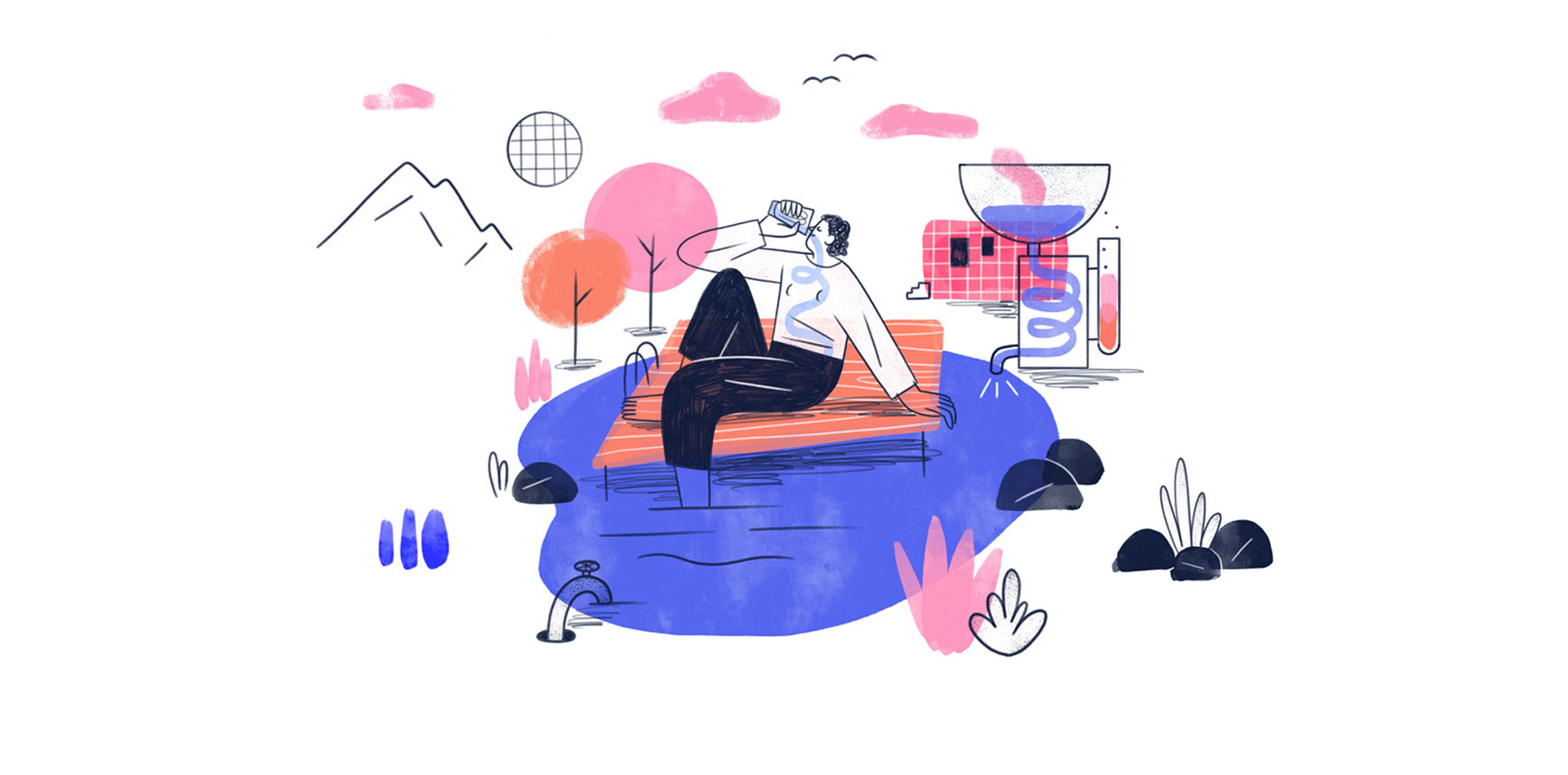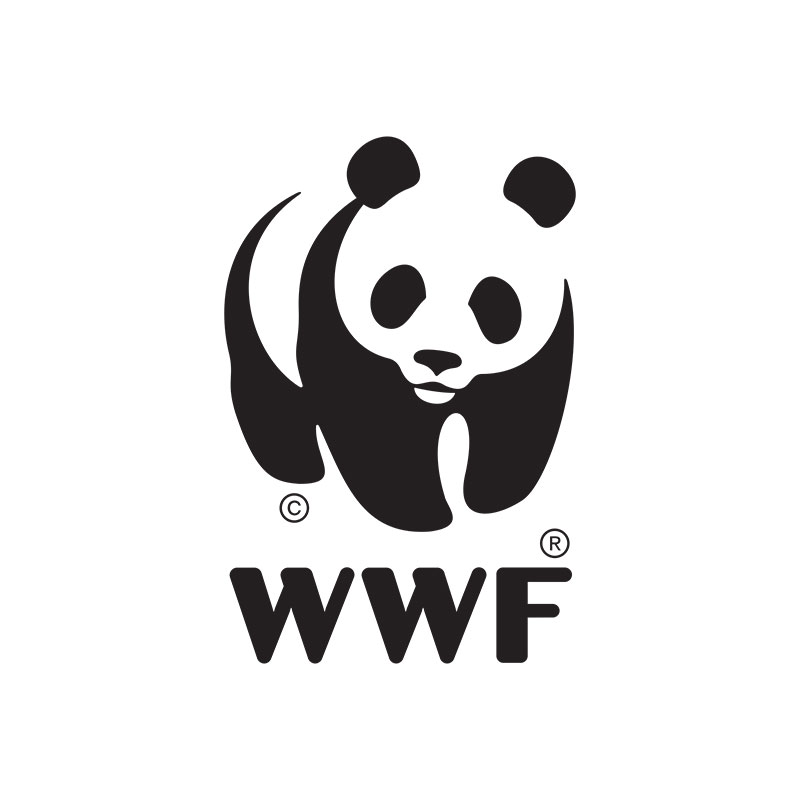
«We must first develop an understanding of the systems.»
We spoke to Tobias Schäfer, a water protection expert at WWF Germany, about the reasons for the poor water situation, about water as the perfect circular system, about new opportunities - and about hope.
Water is essential for all living organisms on this planet. It covers more than 70% of the Earth's surface. Of this, 97.5% is seawater from seas and oceans, while only 0.3% is in the form of freshwater accessible to mankind in rivers, lakes and streams.
These are not only the basis for our drinking and process water. They also play a decisive role from an ecological point of view. Although they make up less than 1% of the Earth's surface, they provide habitats for more than 10% of all known animal species. Freshwater habitats are hotspots of biodiversity.
You would therefore think that this is reason enough to protect our fresh water resources. However, in Switzerland alone, only 20% of waterways still meet the requirements of the Waters Protection Act, and a mere 3.6% are still "extremely valuable" from an ecological perspective. In turn, barely a quarter of these 3.6% is protected adequately. And yet only a healthy ecosystem can preserve our life-giving water, and only healthy waterways can resist the effects of climate change and other threats.
Tobias Schäfer, what does water protection involve?
Tobias Schäfer: In general, water protection has several dimensions. Firstly, there are questions about volumes: whether there is enough, too much or too little water, as well as a good supply of water. Secondly, there is the physical dimension, which deals primarily with pollution by contaminants and even nutrients. Then, there is the ecological dimension, namely waterways as habitats for plants and animals, as well as formative elements of the landscape. Finally, we must also consider waterways in all their variety, uniqueness and beauty, as it is expressed in the Federal Act for the Protection of Nature; that is, their importance for rest and leisure, especially also in Switzerland. That's almost an anthropological component, and relevant in my view because the way we view waterways has a major impact on how we treat them.
What is the current situation with regard to water protection?
Tobias Schäfer: Waterways suffer and are essentially destroyed by the same causes that we have been suspecting for decades. Industrial agriculture, inland shipping, hydroelectric power and flood protection are four major areas in which we do a great deal of damage. Our farming focusses strongly on drainage. For this reason, in many places we have streams that have been straightened rather than allowing them to wind, roar and gush. The lack of structure of waterways and shores also has an effect on the quality of the water. And of course, we have a huge problem with the eutrophication of waterways. About a third of the waterways in Germany contain so many nutrients that the available groundwater can't be tapped and drunk directly because it exceeds the threshold of 50mg of nitrates. This water therefore has to be mixed or processed, even though it is groundwater. In Switzerland too - especially in the intensely farmed and highly populated Central Plateau - large swathes of the groundwater are polluted by nitrates. These fertilisers reach the coast via streams and rivers and thus get into seawater. Then there are pesticides, which obviously also have a tremendous impact on the creatures living in the waterways.
Why is water so polluted?
Tobias Schäfer: The main cause of this has for decades been industrial agriculture, which loses a great deal of nutrients because it doesn't treat the soil well, is based on inputting lots of fossil-related energy and doesn't close cycles. In reality, farming should seek to bring animal husbandry and arable farming together and establish a nutrient cycle. However, industrial agriculture separates them to a large degree.
And yet water itself shows us that you can guide things in circles. Indeed, you could say that the water cycle is the perfect recycling system. At least ecological farming attempts to use the available resources and the soil as efficiently as possible and with as few losses as possible. Farming needs healthy soil, sufficient water, biodiversity, especially in the ground, as well as a variety of crop plants and, of course, an appropriate climate. Surely, all agricultural policies should support this.
Where should we start in order to bring about the necessary changes?
Tobias Schäfer: We must first develop an understanding of the systems. Water is the perfect example of a cycle. The water that is available to us is constantly moving in a circle. Clean water falls to earth as rain, which we can then use, although it goes without saying that plants, animals and our entire landscape must also have enough water available to them. We must realise that it isn't a resource that lies around somewhere as a fossil. We're talking about one section of a cycle. Water is a flow, not a store.
It is said that soil is the archive of our landscapes. You discover archaeological finds and can understand possible processes in sediments. Waterways also provide a snapshot of how we treat nature and our landscapes as a whole. For example, our waterways reflect the materials in their catchment area and essentially mirror what has gone right or wrong on dry land.
What specific solutions are possible, for instance in alternative farming?
Tobias Schäfer: It's worth looking at the intelligent systems which nature provides us by way of prime examples. For instance, there is terrace-based farming in Asia. Over a period of centuries, people there have managed to create systems in which water flows from one terrace to another in order to irrigate paddy fields. We must consider how we can create sensible cycles that are adapted to the relevant landscape.
Do you have hope that we as a society can achieve this?
Tobias Schäfer: In general, yes. After all, what does a river do? It flows, can renew itself and is alive. This ability gives me hope for if we give rivers an opportunity to find themselves again by, for example, removing dams again or removing the pollution by easing off on everything that we do. Extremely impressive successes have been achieved through renaturalisation, where species of fish and birds are returning again and something really good is happening. For example, the Bünz, the fourth-longest river in the Aargau, was for many years squeezed into a kind of corset and was almost entirely channelled. Brown trout could no longer lay their eggs in the river because the bottom was almost rock solid and too hard for creating spawning pits. Today, as a result of renaturalisation, Bünz is a real stream once again, with a loose, gravelly floor in which not only brown trout can lay their eggs, but in which other animal species can also benefit.
It's also a question of awareness. Many people still don't really take this water crisis seriously because we've always taken water for granted.
Drought has made us start to notice the problems, although from an ecological perspective we've been on a downward slide for decades. We must understand this. If we do, I think we have a chance.
Tobias Schäfer, thank you for talking to us!
«Water is a flow, not a store.»
Tobias Schäfer
Tobias Schäfer, Water Protection Expert, WWF Germany
WWF LinkedIn
What's the difference between a fertiliser and a pesticide?
In general, fertilisers promote plant growth, while pesticides serve to eliminate harmful influences of all kinds that could adversely affect this growth.
Fertilisers contain macro-nutrients, nutrient salts, nitrogen, phosphorous, potassium and calcium in the form of organic and inorganic compounds. Organic fertilisers include manure, slurry, compost, sludge and green manure. By contrast, synthetic fertilisers contain carefully targeted amounts of specific minerals and are produced chemically.
Pesticides are active substances used to protect, regulate and/or fight what are known as harmful organisms (e.g. micro-organisms, crop and storage pests, "weeds" and disease vectors).
 Check out the manual
Check out the manual Try out the toolbox
Try out the toolbox Discover the water mission
Discover the water mission Get to know the Migros Pioneer Fund
Get to know the Migros Pioneer Fund